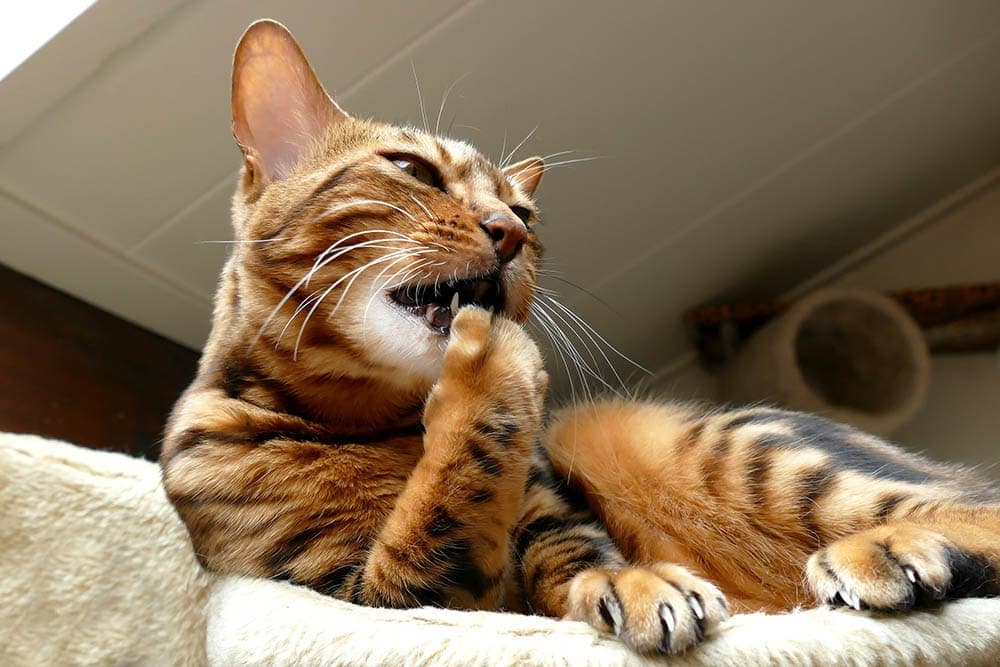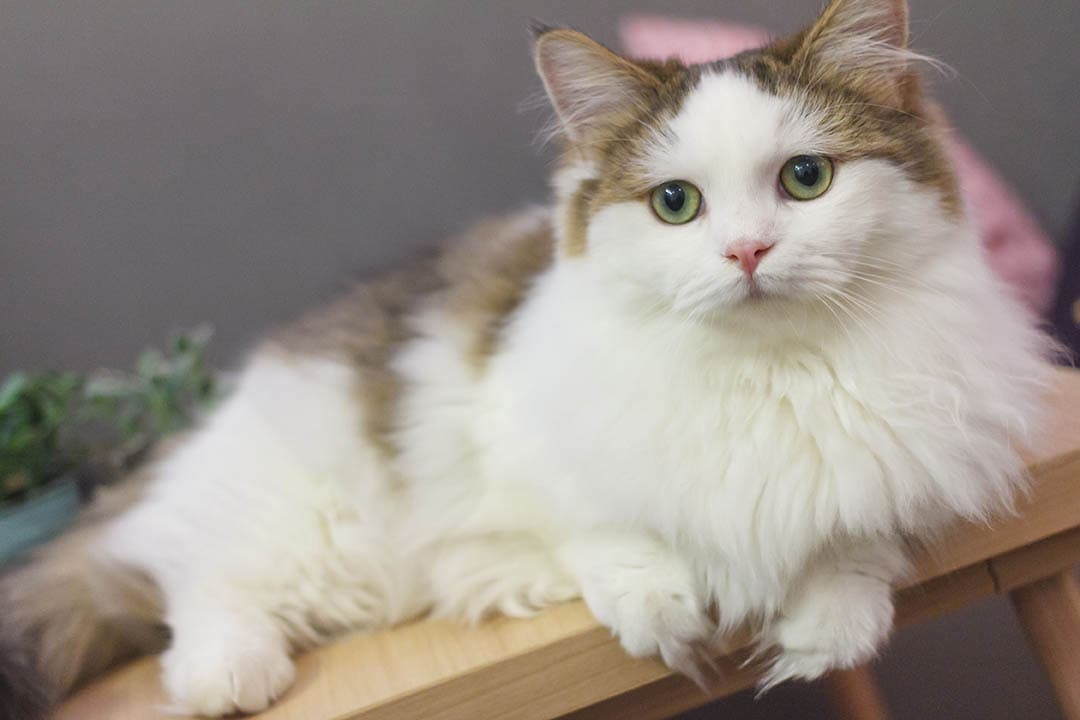7 Signs Your Cat Is Protecting You: Feline Body-Language Decoded
Updated on
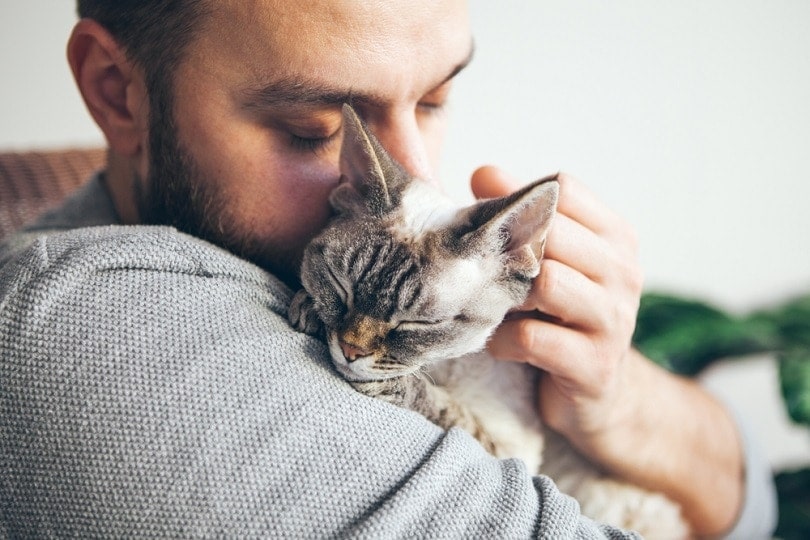
While cats aren’t renowned for their ability to guard people, they may occasionally exhibit protective instincts. However, they do exhibit their protective instincts a little bit differently than a dog would. In many ways, they aren’t as straightforward with their protection, and it can be hard to figure out if they are actually protecting their owners or not.
Still, there are some subtle signs that you can look for to determine if your cat is looking out for you. If your cat exhibits one or more of these signs, there is a very good chance that they are protecting you from a perceived threat.
The 7 Signs Your Cat Is Protecting You
1. Tense
Cats will often get tense when they are nervous, which they absolutely will be if they are trying to protect you from a perceived threat. Often, cats may lay nearby in a seemingly comfortable manner but they will appear to be unusually uptight and tense.
In these cases, you can typically tell that something is wrong. Even if you pet them, they may not lay their guard down and relax. While this isn’t a sure sign that they are being protective, it does mean that something is worrying them that is keeping them from relaxing.
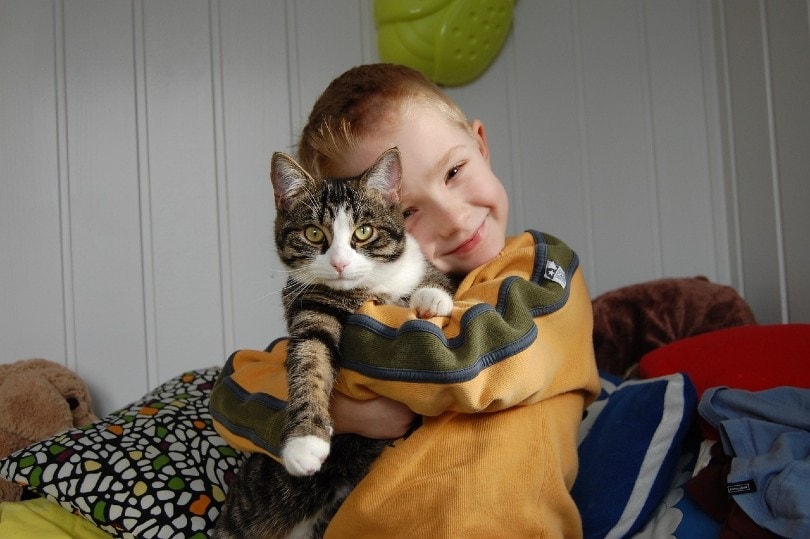
2. Dilated Eyes
Cats that are concentrating, alert, frightened, or hunting often have dilated eyes. Their eyes dilate when there is something that they really need to pay attention to. It helps them track movement and see a bit better, which your cat may feel is important when trying to protect you.
Of course, it is vital that this sign is paired with other common problems. Randomly dilated pupils that don’t respond to light can be a sign of certain diseases. Therefore, you must keep an eye on any strange behaviors or occurrences. When in doubt, call your vet.
3. Pointed Ears
When cats want to pay attention to something, they will often point their ears toward that object, person, or event. It helps them hear a bit better and gives them the focus they need to act if necessary. If your cat is trying to protect you from something they think is dangerous, they will likely act in this manner.
Often, this sign is paired with dilated pupils, which does the same thing (but with sight).
However, if your cat is simply trying to protect you from something unnamed or unseen, then they may simply be a bit jumpy and point their ears all over the place. The concept is the same—your cat just doesn’t know what they’re supposed to be paying attention to.
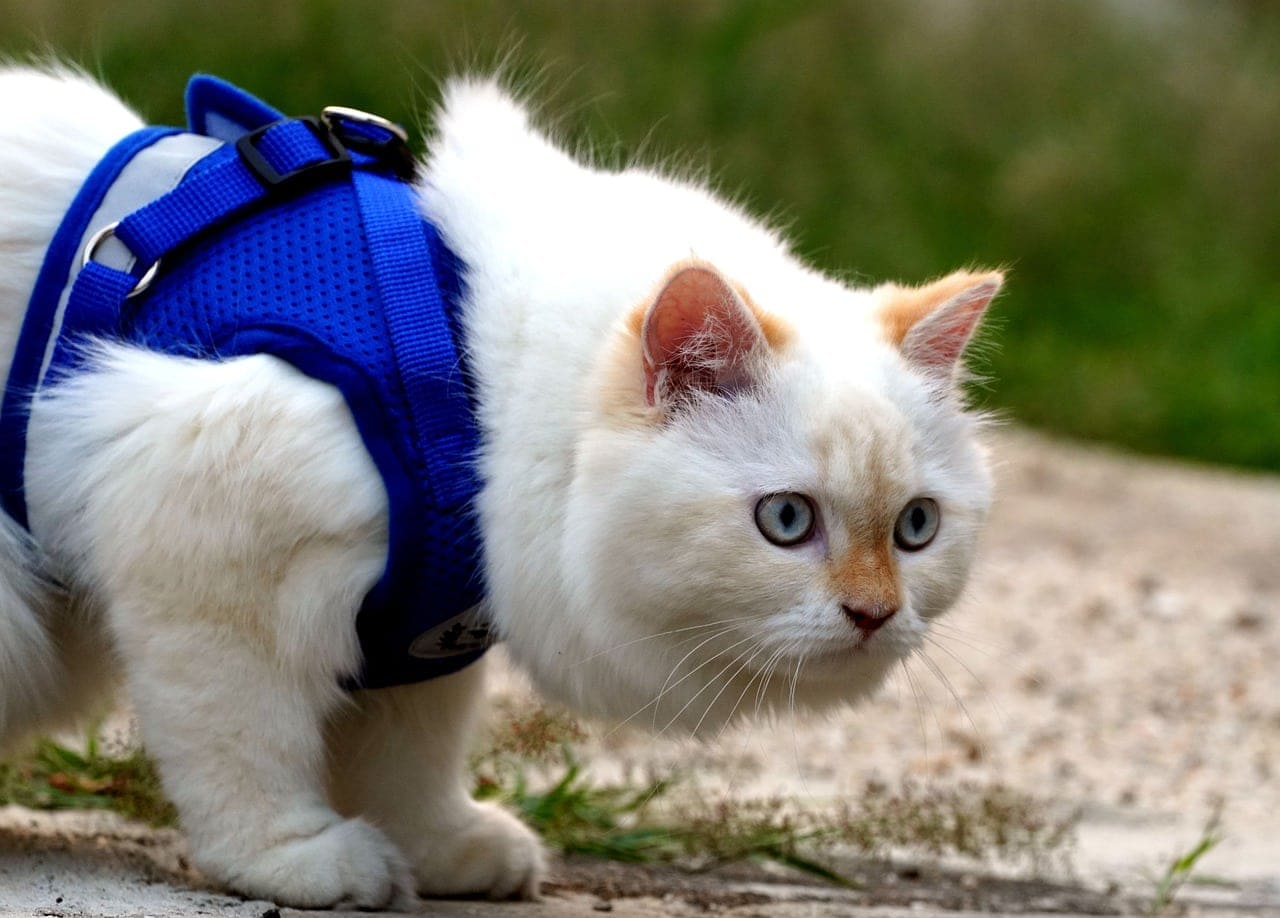
4. Quick Tail Movements
Cats exhibit a lot of their moods and feelings with their tails. Quick and sharp tail movements are usually a sign that your cat is paying very close attention to something. Typically, you see these tail movements when your feline is “hunting.” However, they will also pop up when they are trying to protect against something.
Usually, these tail movements will occur when your cat is looking at the thing they’re trying to protect you from. However, they may also occur whenever your cat is laying around and trying to relax but being very tense.
5. Crouched Stance
Cats crouch because it allows them to jump into action very quickly. Therefore, if they’re trying to protect you from something, they may crouch in preparation. Usually, pointed ears and dilated eyes pair with this stance, as your cat will likely be paying very close attention to the situation as well.
This stance occurs when your cat is looking at the threat. For cats that are uptight and overprotective, they usually won’t crouch unless something scares them. This stance indicates that your cat is very close to springing into action.

6. Piloerection
If a cat changes their body posture to an arched back and a sideway stance and the hairs along their back stand erect, they are clearly signaling defensive aggression to a possible threat. Your cat’s tail is likely to puff up as well when they are scared and are trying to threaten something. Therefore, whatever the recipient of this action is, your cat perceives it as very dangerous.
7. Hissing and Growling
Whenever a cat is really freaked out, they will hiss and growl. This is a cat’s last-ditch attempt to scare away the threat and avoid a fight. Typically, the next step is a fight if one of the cats (or people) doesn’t stand down. Cats are much more likely to hiss and growl when they are backed into a corner or trying to protect something. Other times, they may be much more likely to simply run away.
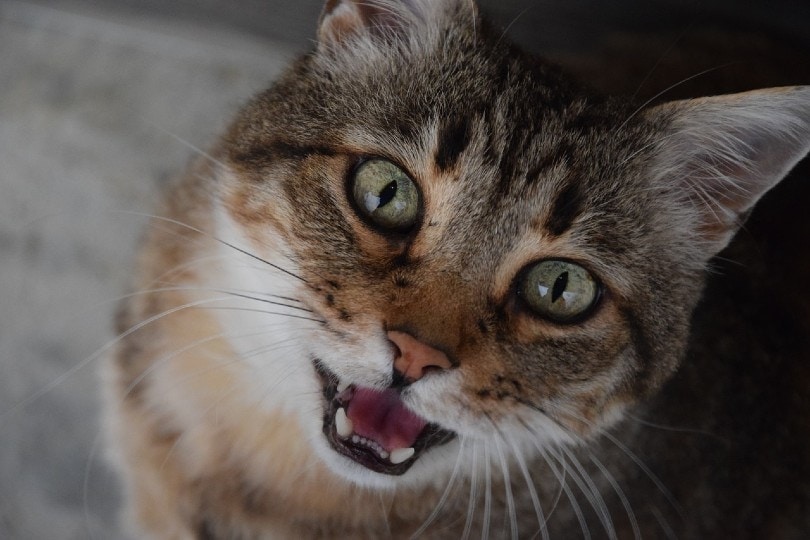
 Conclusion
Conclusion
While cats may not be a lot like dogs, they can be protective in many cases. However, cats are not always protective in the correct instances. While protecting you from a strange cat or intruder is one thing, trying to protect you from the wind at the window is another!
If you notice these signs in your cat and there is not a real threat, then you may want to work on a plan to calm them down. Often, you need to slowly introduce them to whatever is scaring them, like if a particular event or thing seems to be the cause of the fear.
However, for generally antsy cats, you may want to speak to your vet about possible triggers, management, and anxiety relievers. It is not normal or healthy for cats to be wound up all of the time. It’s essential to work with your vet to find out the reasons behind your cat’s behavior. There are many options for anxious cats on the market today, including pheromone collars and prescription medication.
- See also: 7 Signs Your Cat Missed You (Explained)
Featured Image Credit: Veera, Shutterstock

